Ports & Logistics
Gateways to future growth
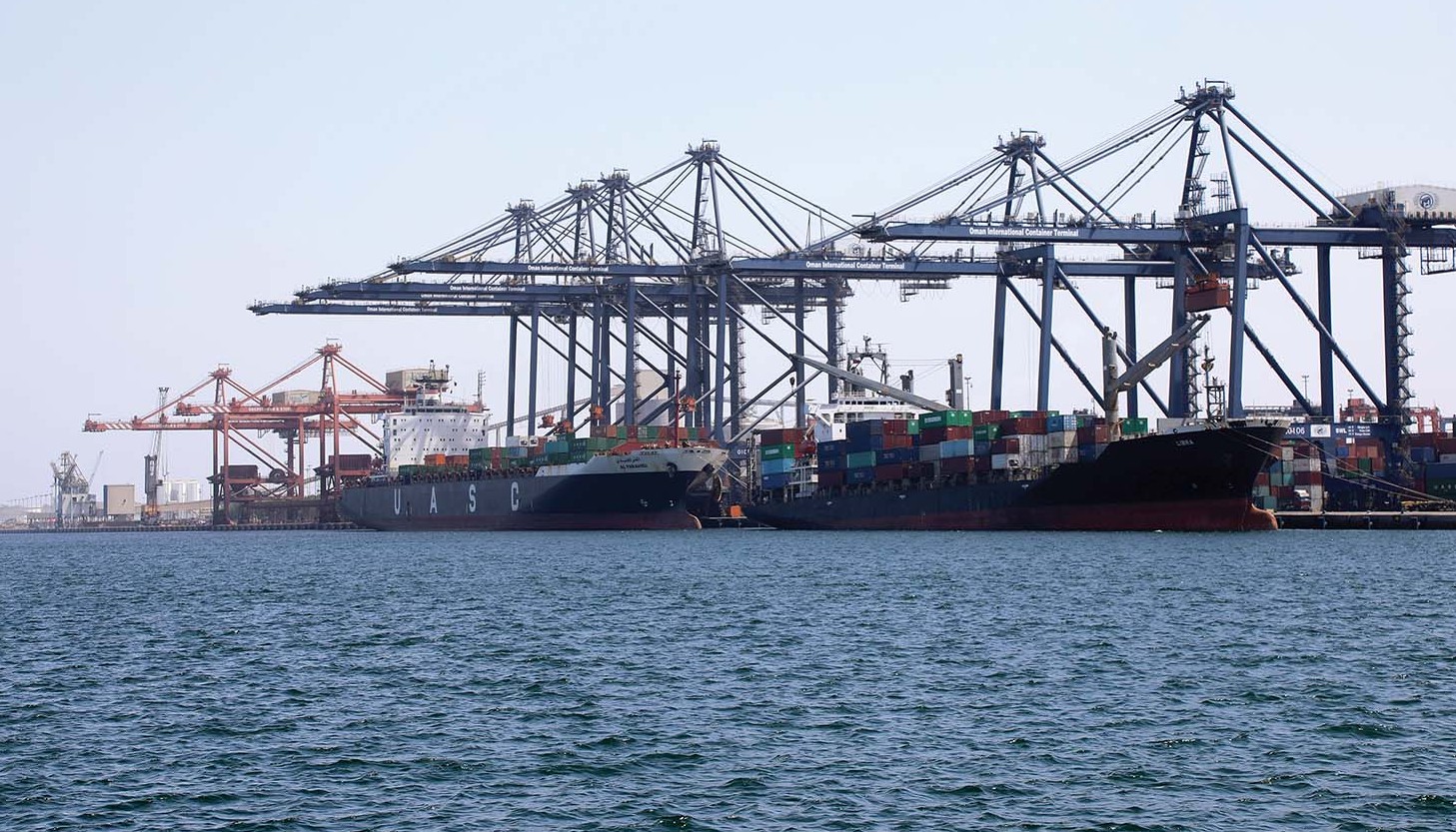
Ports and free zones are becoming game-changers for Oman’s long-term economic growth, as the government is focusing on logistics to supplant the hydrocarbon sector as the nation’s economic mainstay. Muhammed Nafie reports

The chronicle of Oman’s history abounds in fascinating accounts of maritime exploits. Remnants of a 4,500-year-old Reed Boat, excavated from Ras Al Jinz, vouch for Oman (erstwhile Majan)’s seaborne trade links with ancient civilisations as far afield as the olden cities of Ur and Sumer in Iraq and the Indus Valley in India. Strategic location of its ports and harbours, excellent boat building capability, marine navigation skills, coupled with a prosperous trade in copper and frankincense helped Oman to position itself as a leading seafaring nation in the days of yore.
This legacy was carried on to the later centuries as we could see in the fabled story of Sindbad in the eighth century (believed to have originated in Sur), the renowned Ahmed bin Majid who guided Vasco Da Gama around the Cape of Good Hope and beyond in the 15th century, the maritime splendours of the seafaring empires in the 18th and 19th centuries when Muscat occupied a strategic position on the international trade routes and Oman’s ships traveled to as far and wide as London and New York. A new journey of maritime commerce and port development was embarked with the accession of His Majesty Sultan Qaboos bin Said in 1970.
Wind up the time warp to the second decade of the 21st century, when the modern state of the Sultanate of Oman is reinventing and reviving its maritime legacy, by making ports and the attached free zones the centerpieces of its new economic diversification plans.

Ports are becoming game-changers for the Sultanate’s long-term economic growth, with the government and policy makers identifying the potential of the logistics industry to supplant the hydrocarbon sector as the nation’s economic mainstay.
Through an ambitious ‘the Sultanate of Oman Logistics Strategy (SOLS) 2040’, the government of Oman is looking to boost investments in its transport and logistics sector and double the employment in the sector to 80,000 as well as its GDP contribution to RO3bn by 2020. A new holding company, Oman Global Logistics Group (rebranded as Asyad in June 2017) which was formed to consolidate state holdings in the country’s seaports, free zones, and maritime and land transport companies- will be responsible for implementing SOLS.
The creation of Asayd and the implementation of SOLS could not come at a more appropriate time, as the government is heavily injecting money into its three major commercial ports at Duqm, Salalah and Sohar in a bid to attract investors and shipping lines.
Ambitious strategy
Industry experts OER spoke to believe that the new logistics strategy is now in full swing, with the Sultanate continuing to invest across the board to position itself as a formidable hub for regional trade and an ideal place to invest and do business. They exude confidence that thanks to the country’s prime location at the crossroads of east and west, the Sultanate is moving forward fast with plans to transform itself into a major industrial and logistics centre for tomorrow’s global economy.
Sohar is emerging as one of the region’s prime logistical hubs. Sohar Port and Freezone is a remarkable infrastructure development not just for Oman, but for the entire region. Not only has it seen consistent year-on-year growth since it was fist established, attracting investments totaling more than $25bn to-date, but also it is a key aspect of the Oman government’s national logistics strategy.

“Sohar is playing an important role in the diversification of Oman’s economy as we start to take full advantage of our prime strategic location in the region, outside the Strait of Hormuz but close to the main consumer markets of Iran and the Gulf states,” says Mark Geilenkirchen, CEO of Sohar Port. “We remain fully committed to building a modern and sustainable logistics infrastructure that will support Oman in achieving all our long-term objectives.”
“As the port continues to grow in size and regional significance, so too does our adjacent free zone,” adds Jamal T Aziz, CEO of SoahrFreezone. “Our efforts here focus on value-added downstream manufacturing industries that can leverage the availability of feedstock from the port and benefit significantly from the first-class logistics on offer in Sohar, by sea, land or air.”
He explains, “Logistics is something we are focusing on in a big way. When you have a port like Sohar which is connected to the region by sea, road and air, logistics has a lot of potential. Sohar can grow as a pivotal logistics hub to cater to the different markets in the region. Goods can be brought from different parts of the world, consolidated, and then redistributed. We are looking at certain types of industries with big consumer market in the region like food, electronics and other consumable and white goods.”
Reggy Vermeulen, CEO, Port of Duqm, corroborates saying that the creation of Asyad will help further establish Oman as a serious logistics hub in the region and will enhance the Sultanate’s competitive edge. It will also help improve collaboration and coordination in the sector and boost synergies between stakeholders.
“We are fully integrated to the government‘s vision of economic diversification and are essential component of its logistics strategy which is heavily relying on us like other three ports”, says Vermeulen.
“Al Wusta region is very rich in minerals and oil & gas. But the region does not have a proper logistics hub catering to its economic potential. Therefore our primary role will be developing a logistics hub to complement the economic development in the region. You cannot sustain a manufacturing hub without having the means to import the raw materials and export the finished products.”
In addition to that, on a national level, Port of Duqm is looking to identify the logistics requirements of Oman that are not currently being met by two other major ports- Sohar and Salalah. “We can cater to these new requirements as we are the latest entrant and are still being constructed so that a lot of things can still be bent and a lot of new things can be built,” he avers. “We have identified some niche market logistics requirements which are not currently present in Oman. The whole idea is to generate businesses that are available neither in Salalah nor in Sohar but are there in our neighbouring countries.”
Meanwhile, the strategy, while focusing on logistics as a driving force, is also opening up new vistas of public-private partnership. Mahmood Sakhi Al Balushi, CEO of Al Madina Logistics, opines that the strategy will be enhancing other sectors and industries as well, as supply chain is the main component of all other business activities.
“This strategy will help reposition Oman as a more efficient logistic hub in the region. The strategy is well-formulated as it is jointly done by the private and public sectors,” he observes. “It was a joint effort, as we shared ideas, solutions and looked into what we can do collectively. Not only was the private sector taken into account while formulating the strategy, but the government is also involving private companies in its implementations.”
Mahmood furthers, “The strategy’s objectives are clear and it will help us to realign our own strategies, objectives and business models in the same line. Government wants to improve the warehousing capabilities in Oman and it is investing more to improve quality transportation. We are also focusing on enhancing our supply chain and storage facilities. These all combined will help Oman to become one of the most efficient logistic hubs in the region.”
He reiterates, “We look at the ports as the main component of the supply chain logistics. Without well-established infrastructure like ports and airports, logistics companies cannot perform well.”
In expansion mode
All the major ports in Oman are getting kitted out either with massive infrastructure development (Sohar and Duqm) or with new business development strategies (Salalah) to meet the new expectations. (Parenthetically, Sultan Qaboos Port in Muscat which was converted into a tourism port is undergoing an amazing metamorphosis worth billions of rials).
Port Sohar is gearing up for a major land reclamation scheme to drive the expansion of its petrochemicals cluster. The reclamation project, part of the logistics hub’s ambitious Sohar 2040 expansion master-plan, is targeted for completion by November 2018, to enlarge the geographical size of the industrial port area by around 50 per cent via expansions to the north and south of the port. This would effectively add in excess of 1,000 hectares to the port’s existing acreage of around 2,000 hectares.
Says Geilenkirchen, “We are growing fast, and there are lot of interests from industries to invest and build new factories in the port and free zone. We have to embark on the land reclamation before the end of the year. We are expanding so that we can cater to the industries who require to be closer to the water. Our existing water access base is already sold out. However, industries who don’t require to be closer to the water can be accommodated within the free zone or in other parts of the port.”
Jamal adds, “Sohar Port South is a significant land reclamation area, currently under construction, designed to accommodate new industrial projects that will be announced soon. The project will include new, deep-water berths to the south of the existing port area. It will give a substantial boost to the Sultanate’s diversification efforts, aimed to increase the contribution of non-oil sectors to GDP.”
The new Food Zone is one of the main highlights of plans announced for 2017. Says Geilenkirchen, “One of our goals is to maximise our prime strategic location, advanced logistics infrastructure and optimal connectivity to help reduce the 70 per cent gap between food consumption and food production in the GCC; our new Food Zone development will also be seamlessly integrated with the Sultanate’s other food security efforts.”
The new Terminal C features remote-controlled quayside cranes, ready for next generation 20,000 TEU vessels; an automated appointment system to reduce truck waiting times and increase turnaround speed; and new Auto-Gates that cut paperwork and delays for drivers entering and leaving the new terminal facilities in Soahr. Significant government investment in new and uncongested highways, connecting Sohar to the UAE, Saudi Arabia and beyond is also adding to the attraction of the new hub for the region’s 3PL operators.
FreezoneSohar will also witness a number of new developments in 2017, as plans for the second phase of the free zone take shape. “Free zone is also growing very fast. There is a growing interest from different industries to set up companies within the free zone. We already have some larger companies and are about to sign up with new ones,” says Geilenkirchen.
Adds Jamal, “The first 500-hectares of phase one have almost all been leased out. We are currently improving the business environment based on the output received from the ‘Tanfeedh’ process. This includes further streamlining the free zone’s one-stop-shop procedures for investors and ensuring that international best practices are applied. A new bonded road corridor, featuring the latest international customs procedures, will further improve connectivity between the port and adjacent free zone.”
The most futuristic plans on the table are for an Innovation Zone inside the new free zone area, to be built in close cooperation with Port of Rotterdam.“Together with private sector companies, international research institutes and some of the world’s top universities, we are seeking innovative solutions across a broad range of issues that affect our shipping, logistics and industrial sectors,” says Geilenkirchen. “Ultimately this will all be in the best interests of consumers, both locally and internationally.”
Industry-driven port
Although Port Sohar was marginally affected by the drop in car sales and consumable goods in Oman, they were not crucial compared to the volumes the port handled during the year. Says Geilenkirchen, “We have to look at the volumes. We are an industry-driven port. So most of our volumes are metals and iron ore etc. the sales of which depend on international market and hardly on the consumption in Oman. We handle 10 to 20 million tonnes of iron ore depending on the demand from the global market, so our throughput is not extremely affected. In 2016, we surpassed one million tonnes a week. We are normally growing in double digits. I think the average growth is 35 per cent during the last 15 years. And our challenge is to keep pace with it.”

Despite on-going issues in the maritime industry and the continued lull in global oil prices, Port Sohar’s container volumes in Q2 of 2017 grew by 11 per cent from the same quarter in 2016. Container throughput at the Hutchison-managed terminal grew threefold over the past five years, in line with significant investments to increase efficiency to the highest international standards.
Dry bulk cargo also grew significantly at Sohar Port in the first half of 2017, up by 24 per cent in comparison to the first six months of 2016. Liquid bulk, general and project cargo figures were down slightly compared to 2016, however Sohar has exceeded one million tonnes of sea cargo each week, a significant threshold that the Omani logistical hub crossed at the end of 2016 for the first time.
Transshipment hub
The Port of Salalah, the largest port in Oman, continues its aggressive focus on retaining and growing the existing business. Meanwhile, the port is implementing its overall strategy to reduce reliance on the transshipment business on the container terminal side and on limestone and gypsum exports in the general cargo side. While transshipment of containers and handling of aggregates are expected to form the core of the business in the near term, there are a number of initiatives and projects at various stages of discussion that will leverage the existing connectivity of Salalah and its location and also reduce the overall reliance of the transshipment business, informs Ahmed Akaak, deputy CEO, Port of Salalah.

“We already have a number of customers like Octal Petrochemicals, Dune Oman etc in the free zone and Raysut Cement, Salalah Mills and so on. in the industrial estate who are success stories of investments in Oman and have steady volumes to offer to the terminal. Other investments like Carmeuse Majan, USG Boral, Global Gypsum and Fashion Apparel are showing a healthy growth trajectory and expect to increasingly contribute to the growth.”
He adds that the development of the Ammonia Plant by Salalah Methanol is expected to support the development of downstream industries. The recently announced Salalah LPG project is one such intuitive which will not only add to the cargo portfolio of the port, but will also act as a catalyst for development of other industries in Salalah and thereby support industrial development in Dhofar and potential trade through the port.
“We continue to work closely with the Salalah Free Zone and Asyad to target new investors to set up their facility in Salalah which will not only provide the new customers but also support the government’s vision for the logistics industry and diversification of the economy,” he adds. “The MOTC recently conducted an independent survey of the customers. The feedback received has been provided to us and we are addressing the concerns raised. Investments made by the port will be based on the requirements of these new customers and also the evolving needs of the existing customers. We are presently evaluating investment in new equipment to de-bottleneck existing operations and also provide additional services to the existing customers.”
He says the key drivers for projects requiring investments from the port are based on a number of factors like overall long term demand, incremental value delivered to the existing customers and the ability to attract and anchor new customers while at the same time providing a reasonable return on investment made by the company and the government.
On the overall development and expansion of projects, Ahmed says, “There have been a number of key areas that have been identified in various engagements which include but are not limited to simplification of investment regulations, time lines and process of obtaining permits and licenses, availability of utilities, custom regulations etc. A number of these issues have been addressed by the leaders of the respective departments and we hope the other identified issues are addressed quickly and efficiently so as to enhance the overall ease of doing business and attractiveness of Oman.”
The port performance was in line with expectations in 2016 with a terminal showing close to 30 per cent growth in container volumes and a 4 per cent growth in general cargo volumes. Revenues and net profit in 2016 grew by over 10 per cent.
Ahmed says the competitive landscape in the transshipment business with significant capacity development in the region will lead to pressures on margins which can have a cascading effect in the profitability. The GCT also continues to have a high weightage of aggregates in its product portfolio which is contingent on the demand from the Indian subcontinent. Cost management continues to be a focus area for the port to ensure continued profitability and viability.
Duqm leads the way
Construction is in full swing at Port Duqm with the phase 1 expected to be completed by the end of 2019. A lot of infrastructure development projects are being implemented in and around the port. Construction of all the terminals is getting underway. They include container terminal, liquid terminal, dry bulk facilities, and multipurpose terminal. In addition, the port is building its head office and gate complexes with facilities for ROP inspection, customs and the Ministry of Health. “For terminals and inspection facilities alone, we are constructing around 13 buildings and will be spending hundreds of millions of rials to finish the port,” says Vermeulen.
An EPC contract worth RO199.1mn for building a liquid berth in the port was signed in August 2017 between Special Economic Zone Authority Duqm (SEZAD) and Boskalis Westminster (Oman). The work includes detailed engineering designs, construction of marine infrastructure, and dredging and reclamation. Once constructed, the liquid berth will enable the port to export refined petroleum products and add value in hydrocarbon chain.
At the same time, Port of Duqm which started its operations in 2012on a low scale has grown exponentially during the last couple of years. “There has been a steady growth over the years. We posted a substantial growth in 2016 and are continuing it in 2017 as well. We are mainly focusing on the export of minerals and the import of project cargo and containers for Al Wusta region and more specifically for the oil and gas industry in the region,” says Vermeulen.
Although the port is not fully operational like the ones in Sohar or Salalah, it has crossed some significant milestones recently. In 2017, it received the first containers from French shipping giant CMA CGM followed by the first container from Mediterranean Shipping Company (MSC). In addition, the port is receiving big-size project cargos on a regular basis for PDO and BP. Another major milestone is the starting of minerals export from Al Wusta region. This year the port also started the first shipment of limestone from Duqm, which was preceded by the successful exports in 2016 of dolomite, also mined in the vicinity of Duqm. Another significant development is PDO’s five-year deal with Japanese supplier Sumitomo signed earlier in 2017 to supply piping for its drilling operations through Duqm.
Although the container terminal will be commissioned only after 2020, the port is operating on an early container terminal. “Our capacity is 200,000 containers a year which is rather limited compared to the final capacity. However, we are able to cope with any type of container, whether it be standard containers or reefer containers,” says Vermeulen.
New growth model
Despite the economic slowdown, Port of Duqm has witnessed growth both in revenue and volume and in the number of ships it received. “Our market and our volumes are growing, because for some types of industries using Port of Duqm is actually cheaper.
It is a win-win situation: they are saving money and we are increasing our trade volume and efficiencies.” Asked about the delay in the projects due to oil price fall, Vermeulen said, “Although we had suffered a delay in the past, things are running pretty smooth now. If you have been to Duqm recently, you can see that there is a frenzy of activities which are making for any delay in the past. SEZAD is putting in tremendous efforts to sustain the projects, despite the economic slowdown.”
He says there was a fear, but that fear has already been overcome and because of that there has never been a massive impact. In addition, there is a national will and agenda for economic diversification and Duqm lies at the heart of it; therefore slowdown on a project like Duqm is not a good message.
“The big challenge confronting us a few months ago was to continue the growth momentum despite the economic prizes. But SEZAD has proved to the country and investors as well that we have achieved that. Things are moving much faster than they did a couple of years ago. That is quite significant. But still there are challenges, because it is a new project and we are creating it from scratch. We are now attracting the so-called early birds rather than established companies who will join once the free zone is set in motion. Attracting your first client is the real challenge. The advent of Duqm Refinery is really significant, in reinsuring the market and convincing everybody that Duqm is happening.”
Referring to the future outlook, he says he is quite optimistic as things are going in the right direction at the right pace. “We are working with our clients to convince them that using the Port of Duqm is actually valuable for them as it helps them save money. The current economic situation is all about saving money. When they use port of Duqm, they have fewer kilometres to travel.”
He observes that low oil price is forcing the companies to be more efficient; and in order to be more efficient, they need to ease their logistics hurdles. Here Port of Duqm comes in handy because of its strategic location in the middle of Oman. “We are working with PDO to implement their new logistics strategy, aimed at concentrating their warehouses and distribution network. That makes them save a lot of money and millions of driven kilometres,” he says.
However, a mega project of Duqm’s stature will take time to fully take off. “Ports like Sohar or Jebel Ali were not built in five years. So Duqm will also grow steadily. But I am confident that the government of Oman is putting in place the right ingredients to build its new economic and logistics hub. There are a lot of potential areas that are not fully tapped in Duqm, and they are going to be utilised in the future such as political and economic stability of Oman, the proximity to African’s market etc. These elements are key for the investors. So as the machine started to roll, we need to promote ourselves, increase our visibility and win the credibility of more investors.”
Staying competitive, easing regulations
However industry experts call for renewed focus on increasing competitiveness, ease of doing business and reducing government regulations, which are essential for the ports and free zones to take centre stage in the nation’s future economic development.
There is a lot of interest in the FreezoneSohar and the company is signing new contracts almost every week. So the future looks bright. But as Aziz says, the success of Port of Sohar, and any port for that matter, depends on staying competitive compared to other ports in the region, in terms of value proposition, pricing, ease of doing business etc. “We put these elements very high on our agenda. It’s true that we are strategically located outside the Strait of Hormuz, but there are other ports and free zones in the region and therefore we have to look at how competitive we are in the region to continue to grow. All these dimensions are very essential for us and therefore we are working very hard to ensure high level of competiveness and efficiency.”
He adds, “When you look at the current state of affairs, we need to keep adding capacity, and keep investing in further growth of the port and the free zone. For us, growth in the port is equal to the growth in the free zone, as they sort of rely on each other. We are looking at the bigger investments coming up in the ports in the coming periods, and we are sure they are going to spillover to the freezeone as well.” He informs that FreezoneSohar will start phase 2 very soon and has plans for even bigger expansion than phase 2 in the future, in what can be described a totally new dimension and expansion.”
According to Ahmed, some of the key emerging challenges faced by the port includes lack of import export trade which limits the number of shipping lines interested in using Salalah; continued development of capacity within and outside Oman which target the same businesses; overall increase in cost of doing business and the ability of other countries to provide more simplified and faster approval and licensing processes for setting up businesses.
He elucidates it citing an example, “One of our customers’ continued presence as well as expansion in Oman is contingent on the government support and lobbying for securing an exemption pertaining to that specific industry in the FTA. We hope that the government gives it the attention and urgency it deserves since it may otherwise result in the relocation of this industry permanently outside Oman and the loss of many local jobs.”
As Ahmed rightly observed almost every country in the region is eyeing investments in their respective regions and looking at rolling out the red carpet to the investors. Many of these countries like India have a local population with an increasing level of disposable income that can serve as the demand anchor for these new investments. Oman has a relatively small local demand and therefore has to rely on exports for its growth. “It is therefore essential that Oman has extremely clear and simplified but effective regulations to attract trade and industries to set up base to cater to the region,” concludes Ahmed.
In full sail
Robert D. Kaplan has made Oman his principal reference point while exploring the perennial relationship between the sea and the desert in his book Monsoon: The Indian Ocean and the Future of American Power. He observes that as seafarers Omanis were the ultimate Arabs and so influential have they been throughout history that Arabian sea was formerly known as the Sea of Oman. Kaplan goes to the extent of saying that globalisation happened in Oman and the rest of the Indian Ocean in antiquity and in the early medieval era long before it did in oth er places, leading to an extra ordinary level of sophistication.
er places, leading to an extra ordinary level of sophistication.
It seems today’s policymakers glean their lessons pretty well from history when they go back to the drawing board to draft the new road-map for a post-oil economy. But we are setting sail at high tide. As the country braces itself for the imponderables of a prolonged period of low-oil price and gears up for the long journey of economic diversification with focus on logistics, trade and manufacturing, it can’t afford to stay away from adopting the right mix of policy measures and regulations for incentivising growth, attracting new businesses, sustaining the existing ones and enhancing competiveness and efficiency.
-
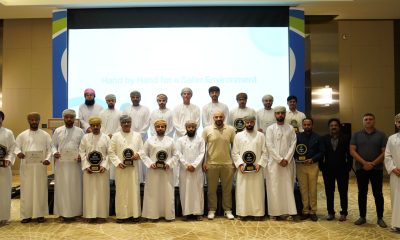
 Banking & Finance2 weeks ago
Banking & Finance2 weeks agoOman Oil Marketing Company Concludes Its Annual Health, Safety, Environment, and Quality Week, Reaffirming People and Safety as a Top Priority
-

 Economy2 months ago
Economy2 months agoMaal Card: What Oman’s New National Payment Card Means for Everyday Users
-

 News2 months ago
News2 months agoSheikh Suhail Bahwan, Chairman of Suhail Bahwan Group, Passes Away
-

 News1 month ago
News1 month agoOIG Appoints New CEO to Lead Its Next Chapter of Excellence
-
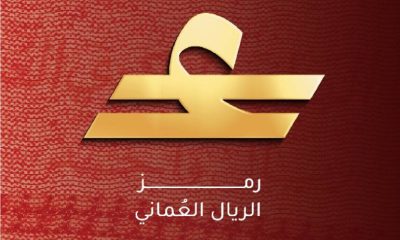
 Economy2 months ago
Economy2 months agoOman Unveils Official Omani Rial Symbol in Landmark Move to Boost Global Currency Presence
-
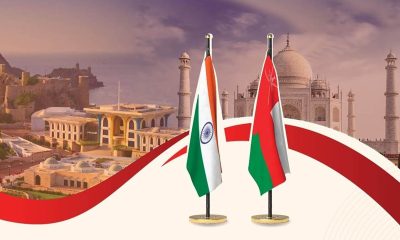
 News1 month ago
News1 month agoReport: How India & The Middle East Are Exploiting Immense Economic Synergies
-
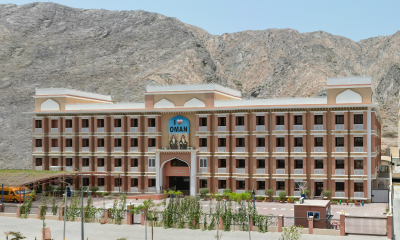
 Uncategorized1 month ago
Uncategorized1 month agoOman’s ISWK Cambridge Learners Achieve ‘Top in the World’ and National Honours in June 2025 Cambridge Series
-
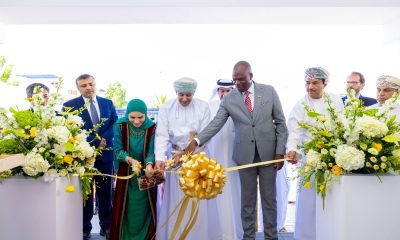
 Trade1 month ago
Trade1 month agoConsulate Office of the Republic of South Africa opens in Muscat, enhancing bilateral relations































You must be logged in to post a comment Login